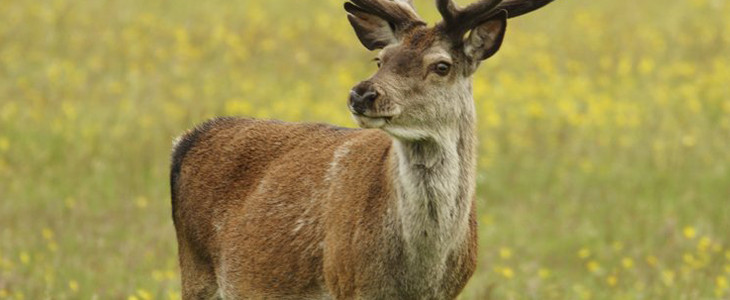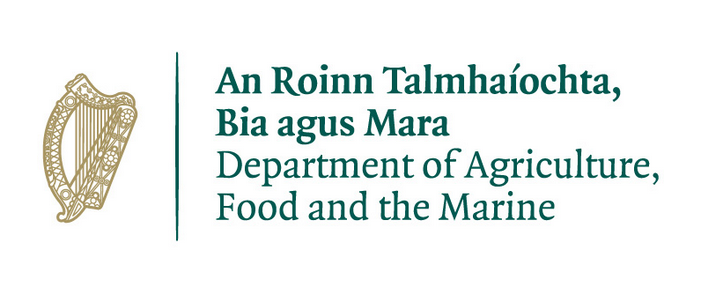
Deer
Fallow Deer - Dama dama / Red Deer - Cervus elaphus / Sika Deer - Cervus nippon / Muntjac Deer - Muntiacus reevesi
Deer Crimes
Wild Deer are protected by law in the Republic of Ireland under the Wildlife Acts 1976 to 2012.
Unless authorised to do so under a valid licence or permission granted by the Minister for Arts, Heritage and the Gaeltacht under the Wildlife Acts 1976 to 2012 it is unlawful to:-
- Hunt wild deer
- Shoot wild deer with firearms and ammunition other than a type authorised for that purpose (See Wildlife Act,1976 (Firearms and Ammunition) Regulations, 1977)
- Course (pursue/chase) wild deer with dogs
- Enter on lands with a firearm or other hunting equipment for the purpose of hunting wild deer without the permission of the owner/occupier of the land
- Hunt red deer in County Kerry
- Hunt or disturb for the purpose of hunting a wild deer by means of mechanically-propelled vehicle, whether it is being so propelled or is stationary
- Hunt a wild deer at any time during any period beginning one hour after sunset and ending one hour before sunrise
- Hunt a wild deer using any lamp, light, torch, mirror or other artificial light reflecting or dazzling device or appliance
- Hunt a wild deer using any device for illuminating, image intensifying or heat seeking a target or any device for night shooting
- Hunt any (wild or captive) deer with two or more dogs (Except by a person on foot under and in accordance with a licence granted under section 29 or a permission granted under section 42 of the Wildlife Act,1976)
- Be in possession of a wild deer, whether alive or dead
- Sell, keep for sale, offer for sale, purchase for resale or engage in taxidermy in respect of a wild deer whether alive or dead, or any venison or other parts, products or derivatives thereof
- Deliberately introduce any non-native animal species into the wild (e.g. Muntjac or Chinese water deer)
A few examples of licences or permission which may be applied for under Wildlife Acts 1976 to 2012:
Section 29 Licence to hunt wild deer with firearms under and in accordance with the Wildlife (Wild Mammals) (Open Seasons) Orders 2005 to 2012 allows wild deer species to be hunted at certain times of the year.
Section 42 Permission to stop serious damage to crops, forestry, livestock, etc by protected wild animals can be applied for by the owner or occupier of property to scare, capture or kill any protected wild animal as he thinks appropriate to stop the damage. (e.g. damage to crops or a forest plantation by wild deer)
Section 23(6) Licence to keep an injured or disabled wild animal with the purpose of rehabilitating it for release back into the wild.
Wildlife Act, 1976 (Firearms and Ammunition) Regulations, 1977
These regulations specify the ONLY type and ONLY calibre of firearms and ammunition which may be used to shoot deer species:
Firearms – Centre-fire rifles of not less than ·22 calibre with a muzzle energy of not less than 1,700 foot pounds.
Ammunition – Any bullet for use in such rifles, weighing not less than 55 grains.
CARTED STAG HUNT
Carted stag hunting was made illegal in June 2010
Carted stag hunting; the practice of taking a captive-bred, de-antlered red deer in a trailer to a location for a hunt, releasing the farm reared animal into open countryside and pursuing it on horseback with a pack of hounds before recapturing it for use in subsequent hunts.
Wildlife Licensing Unit,
National Parks and Wildlife Service,
Department of Housing, Local Government and Heritage
National Parks and Wildlife Service
90 King Street North
Dublin 7
D07 N7CV
Email: wildlifelicence@npws.gov.ie
Call: 01 888 2000
Recording evidence at the Crime Scene
Assessing whether a criminal offence has taken place may not always be straight forward and other possibilities such as natural deaths, predation and legal hunting should be considered.
If you come across a wildlife crime scene or a dead bird or object that may be related to a wildlife crime, every piece of information is – or might be – important, but it needs to be recorded properly and accurately for the authorities to have a chance of prosecuting an offender.
Before you do anything else it is very important that:
- You do NOT put yourself in danger by approaching anyone you suspect of committing a crime – they may be violent and/or aggressive.
- You do NOT touch any dead birds or animals. They may be poisoned baits or victims of poisoning. Many poisons (e.g. Carbofuran) are extremely dangerous to us as well as wildlife in even very small amounts and can be absorbed through the skin.
- You do NOT disturb the scene by walking around unnecessarily – small pieces of evidence (cigarette ends, footprints, the marks left by a spade etc) may be lost or trampled into the mud or grass.
- You do NOT move any items at the scene – unless asked to do so or an animal or human”s welfare is/may be compromised by leaving it at the scene.
- You do NOT mark the site (e.g. with a white plastic bag) Although being able to see a marker from a distance might sound like a good idea, it will also alert an offender that someone has been at the site and they might go back and remove evidence.
- You do NOT do anything illegal yourself – leave crime to the criminals!
Record the date and time
- Record the transport
Do this as soon as possible, as suspects can be traced from the registration number
Photograph/write down any vehicle registration numbers that are or might be related to the incident. It is legal to record a registration number if you suspect that the vehicle has been or may be used in a crime. - Record the person
Recording the offender’s face is important of course, but their clothing, the bags they’re carrying, the equipment they’re using are all important too. - Record the scene
Take photographs or video of the scene using a mobile phone or camera etc (or make as accurate a sketch as possible). - If possible try to cover any items, perhaps with vegetation, to make them safe; but make sure you don’t disturb the crime scene in the process!
- If photographing an object, try to put something beside it for scale (e.g. a coin or notebook) providing it won’t disturb the crime scene.
- Record the location
It is particularly important to record locations accurately (apps that provide GPS data are available for most smartphones)
In an urban area note the address or a description of the location. In the countryside take wide angle photographs of any landmarks; a tree, a distinctive fence line, a hill. - Even if in doubt take a photograph and email it to the National Parks and Wildlife Service WildlifeEnforcement@npws.gov.ie
Reporting a deer crime
To report suspected illegal deer activity contact the National Parks & Wildlife Service
Tel: (01) 888 2000
Contact numbers for your local NPWS Conservation Ranger HERE
If you can’t reach NPWS personnel call An Garda Síochána:
If the crime is in progress or about to happen, or if the offender is still at the scene or has just left call 999 or 112
If the event is finished then contact the National Bureau of Criminal Investigation on envi.wildlife.crime@garda.ie and call your local Garda Station (Garda Stations Directory) or the Garda Confidential Telephone Number 1800 666 111
[Although it will assist the NPWS and Gardaí if you provide as much information as possible, you do not have to give your name if you ring to report an incident.]
| If the deer is alive and is injured, also call a wildlife rehabilitator/vet from the contacts page of Irish Wildlife Matters | Irish Wildlife Matters |
| If you witness any crime involving a deer, also contact | Irish Deer Commission |
For more information on reporting and how to follow up on a reported crime click HERE

